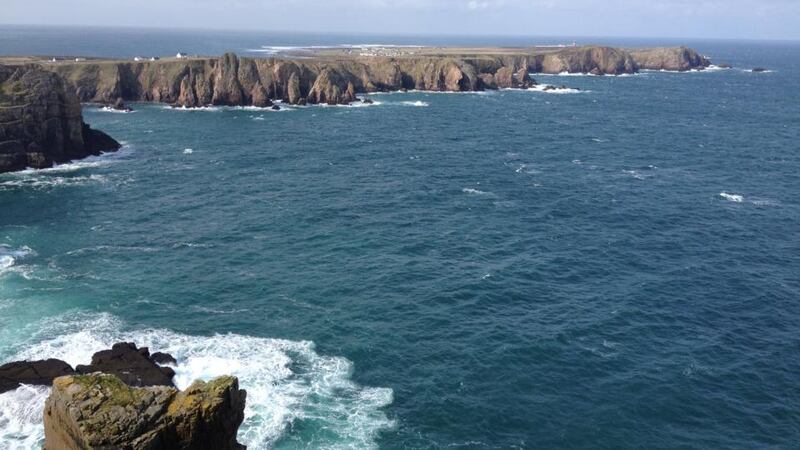|
Go walk: Tory Island, Co Donegal
Map: OSI Discovery Series 1 Donegal |
I’d looked out at Oileán Thoraí – or Tory Island – for more than four decades, often while cycling, hiking or driving around the roads and hills of northwest Donegal. I saw its shape only in two dimensions. Low in the west with high dramatic towers in the east, it showed only length and height, but no breadth. Wild in terms of remoteness, accessibility, folklore and legend and, inevitably, weather, I answered its siren call one day in March, when the westerly winter gales had finally eased.
Arriving at the pier of West Town, I cleared the head and let the island talk to me, to tell me where to start. The high Tors to the east, which gave the island its name, called for attention first and foremost. On the way there I lit a candle in the tiny church of St Columbcille, and imagined deep winter Sunday gatherings, the quietness inside often competing with the unpredictable weather outside.

I was nearly at East Town when I ventured off the single linear road and on to the bare, flat, soil-stripped “outfield”, at last experiencing the breadth of the island. Arriving at the spectacular north coast was the beginnings of some of the most dramatic coastal scenery I’d ever seen, and that includes Slea Head, the North Mayo coast, Croghaun on Achill and even Slieve League. Beyond the end of the road, over the narrow causeway that nearly splits Tory in two, lies the real scenic wonderland of the island; not a place for anyone without a head for heights, with its dizzying drops on to the backs of wheeling seagulls, mesmeric white-churning water and a shore of undercut cliffs and weather-shattered Tors. And all the time, along that lovely long line of mainland hills, flat-topped Muckish and dramatically-pointed Errigal always caught the eye.
The barely discernible hints of habitation (fields and the promontory fort of Dun Balair) on the island’s “summit” at 83m, were all dissembled, flattened and scattered by probably millennia of storms, and defied any attempt to connect with the thoughts and challenges of those ancestors of ours, who worked the thin soil and sought refuge there. A place to linger and imagine, looking onto that spectacular line of broken Tors, a bony skeletal finger pointing to the north, that is An Tor Mór.
Then it was back through West Town, and on to the west of the island. Initially the “keep off” signs around the run-down lighthouse had me wondering if it was worth the hike! But as often happens, I came across a beautiful, poignant place. Out on that most northwesterly point of the island (if not of Ireland or even Europe!), in a tiny lonely boulder-enclosed grassy space, I found two headstones, one clearly legible, the other older and worn; with only the wind and the sea and the night-time light of the nearby lighthouse for company. I lingered, wondering about the young William Fullerton, aged only 26, Sapper, Royal Engineers, who died in August 1940.
On the stormy journey back, I decided that I’d fallen a bit in love with the island’s big seas and big skies, its beauty and energy, its solidity, its sadnesses and its wildness.









